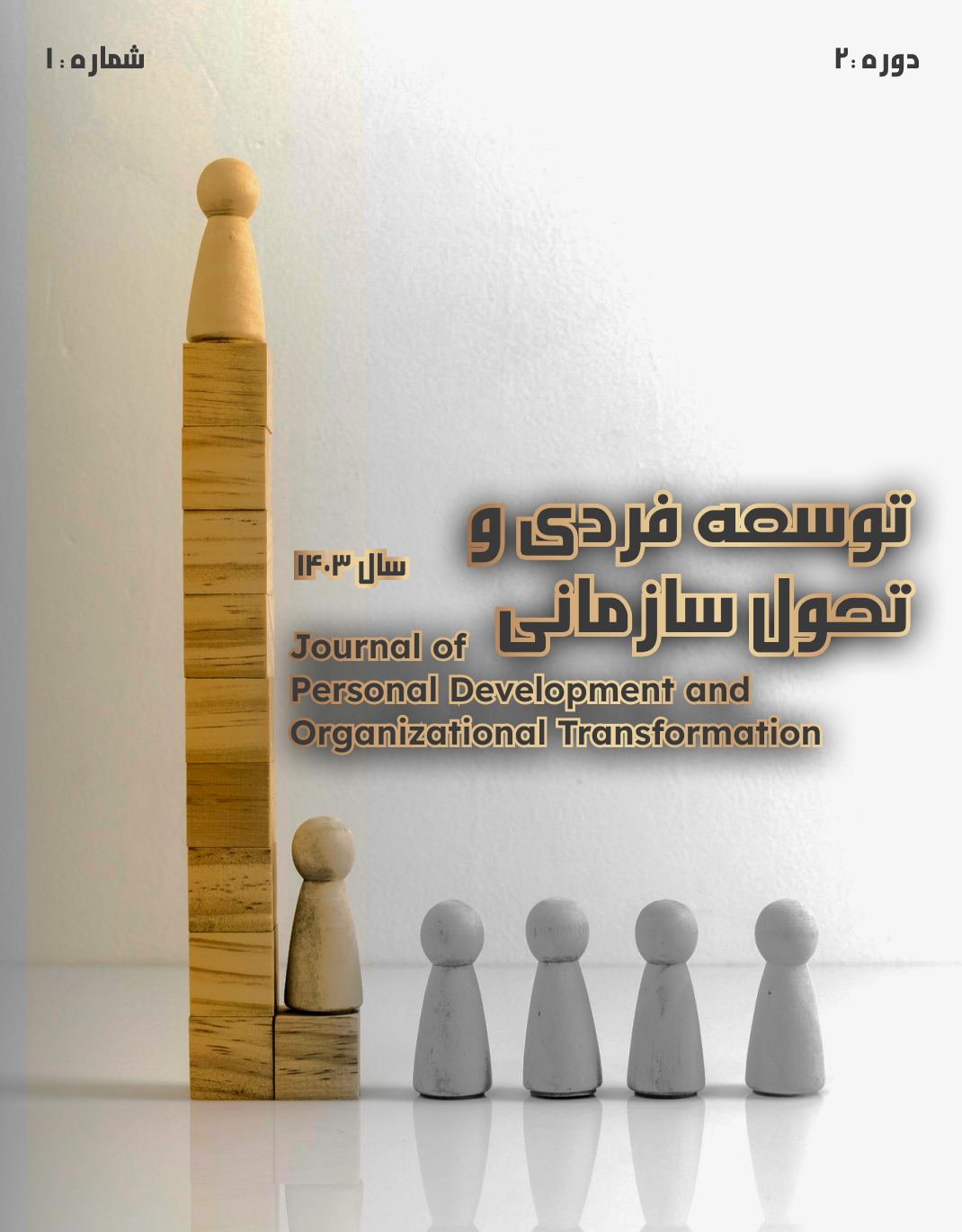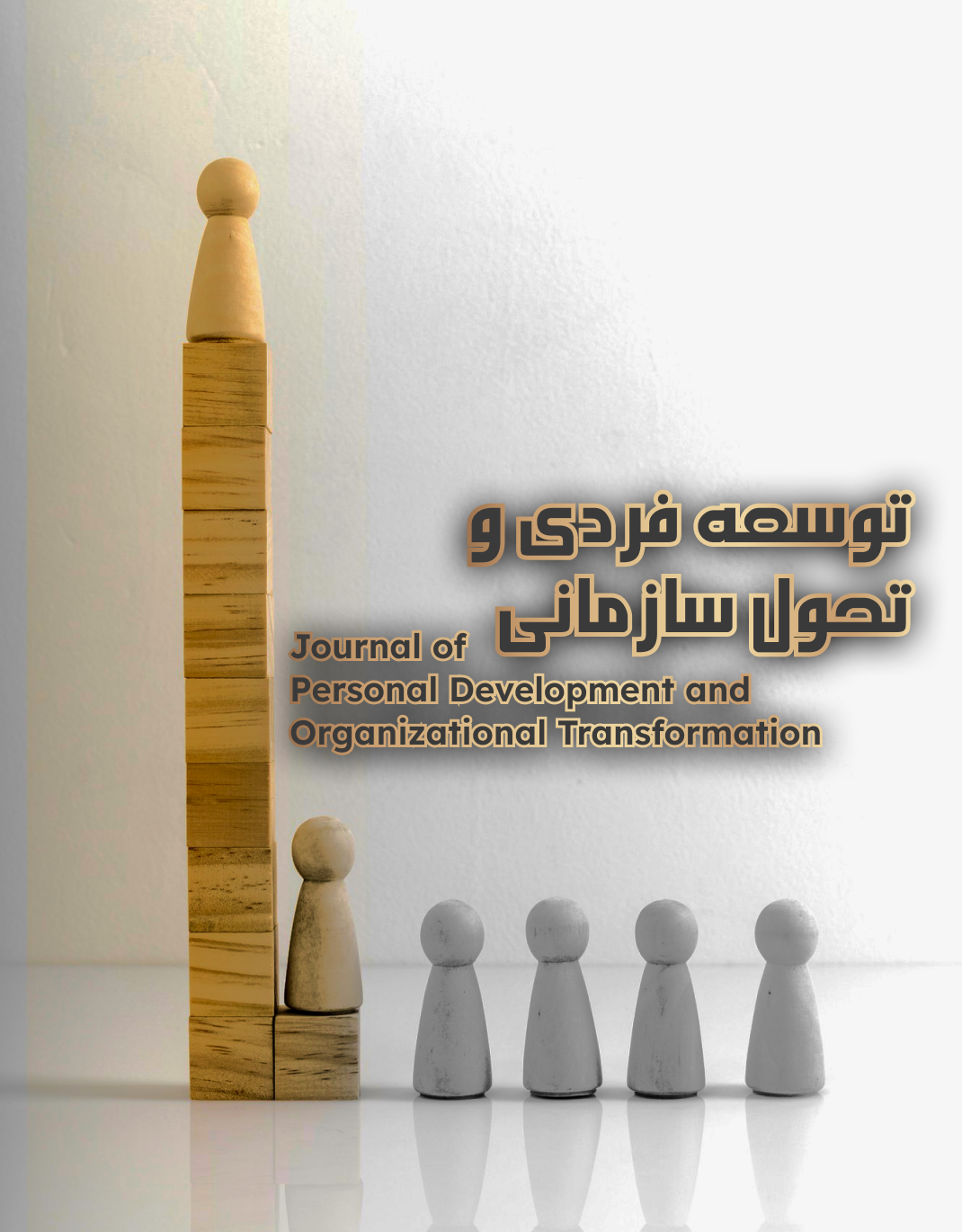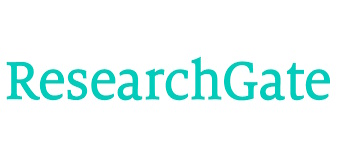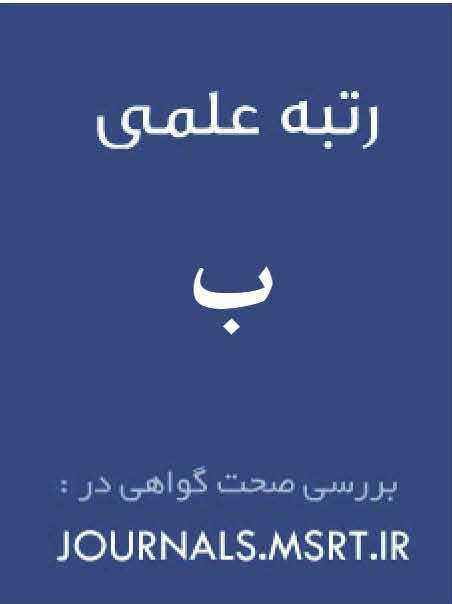کاربست تکنیک سندلوسکی و باروسو در شناسایی مؤلفههای مدل جامع یکپارچه مدیریت ریسک سازمانی در توسعه کسب و کار جدید
کلمات کلیدی:
ریسک کسب و کار, مدیریت ریسک سازمانی, توسعه کسب و کار جدیدچکیده
مدیریت ریسک در توسعه کسب و کار جدید، یکی از جنبههای اساسی و حیاتی در موفقیت سازمانها محسوب میشود. با گسترش روزافزون فناوریها، تغییرات نوظهر در بازارها و نیاز به تطابق با محیط کسب و کار پویا، شناخت، ارزیابی و مدیریت بهینه ریسکها، عاملی کلیدی در تضمین پایداری و رشد سازمانها میباشد. هدف تحقیق کاربست تکنیک فراترکیب برای شناسایی مؤلفههای مدل جامع یکپارچه مدیریت ریسک سازمانی در توسعه کسب و کار جدید است. محقق با بهکارگیری رویکرد مرور نظاممند و فراترکیب، به تحلیل نتایج و یافتههای محققین قبلی دستزده و با انجام گامهای 7 گانه روش ساندلوسکی و باروسو، به شناسایی عوامل مؤثر پرداخته است. از بین 541 مقاله، 40 مقاله بر اساس روش CASP انتخاب شد همچنین روایی تحلیل با مقدار ضریب کاپا 747/0 تائید گردید. در این زمینه بهمنظور سنجش پایایی و کنترل کیفیت، از روش رونوشت استفاده گردید که مقدار آن برای شاخصهای شناساییشده در سطح توافق عالی شناسایی شد. نتایج حاصل از تحلیل دادههای گرداوری شده در نرمافزار MAXQDA منتج به شناسایی 58 مفهوم اولیه براساس 18 شاخص در 5 مقوله شد. براساس تکنیک فراترکیب 5 بعد نیز براساس این مفاهیم دسته بندی شدند. 5 بعد عبارتند از: بعد استراتژیک، بعد عملیاتی، بعد مالی، بعد منابع انسانی و بعد فرهنگی. مدیریت ریسک سازمانی یکپارچه به عنوان چارچوبی جامع برای شناسایی، ارزیابی، و کاهش ریسکها در توسعه کسبوکار جدید، نقشی اساسی در پایداری و موفقیت سازمانها دارد. مؤلفههای کلیدی این مدل شامل شناسایی انواع ریسکها (مانند ریسک مالی، عملیاتی، استراتژیک و فناوری)، ارزیابی میزان تاثیر آنها، طراحی و پیادهسازی راهکارهای کنترل و کاهش ریسکها و ارزیابی اثربخشی اقدامات کنترلی است.
دانلودها
مراجع
Alvarez-Alvarado, M. S., & Jayaweera, D. (2020). Operational risk assessment with smart maintenance of power generators. International Journal of Electrical Power and Energy Systems, 117, 105671. https://doi.org/10.1016/j.ijepes.2019.105671
Anam, M., Setiawan, R., Chinnappan, S. K., Nik Hashim, N. A. A., Mehbodniya, A., Bhargava, C., Sharma, P. K., Phasinam, K., Subramaniyaswamy, V., & Sengan, S. (2022). Analyzing the impact of lockdown in controlling COVID-19 spread and future prediction. International Journal of Uncertainty, Fuzziness and Knowledge-Based Systems, 30, 83-109. https://doi.org/10.1142/S0218488522400050
Baran, B., & Woznyj, H. (2021). Managing VUCA. Organizational Dynamics, 50(2), 100787. https://doi.org/10.1016/j.orgdyn.2020.100787
Berger, L., & Eeckhoudt, L. (2021). Risk, Ambiguity, and the Value of Diversification. Management Science, 67(3), 1639-1647. https://doi.org/10.1287/mnsc.2020.3823
Braumann, E. C., Grabner, I., & Posch, A. (2020). Tone from the top in risk management: a complementarity perspective on how control systems influence risk awareness. Accounting, Organizations and Society, 84, 101128. https://doi.org/10.1016/j.aos.2020.101128
Chaudhry, S., Ahmed, R., & Huynh, T. (2023). Tail risk and systemic risk of finance and technology (FinTech) firms. Technological Forecasting and Social Change, 174, 121-191. https://doi.org/10.1016/j.techfore.2021.121191
Daneshi, Y., & Ismailzadeh, A. (2022). The effect of enterprise risk management system quality and audit committee characteristics on corporate reputation. Financial Accounting and Auditing Research, 14, 207-232. https://journals.iau.ir/article_693675.html?lang=en
DasGupta, R., & Deb, S. (2022). Role of corporate governance in moderating the risk-return paradox: Cross country evidence. Journal of Contemporary Accounting and Economics, 4, 1-18. https://doi.org/10.1016/j.jcae.2022.100313
Deopgen, M., Clauss, T., Kraus, S., & Cheng, C. F. (2020). Knowledge management capabilities and organizational risk-taking for business model innovation in SMEs. Journal of Business Research, 4, 1-10. https://www.sciencedirect.com/science/article/abs/pii/S0148296319307659
Dhillon, R., Ngyen, C., Kleppesto, S., & Hellestrom, M. (2021). Strategies to Respond to a VUCA World. In (pp. 1-84): Department of Business Administration.
Dicuonzo, G., Donofrio, F., Onorato, G., & Turco, M. (2022). Enterprise risk management: What opportunities for the banking sector? In The Changing Financial Landscape (pp. 171-185). https://doi.org/10.1007/978-3-030-82778-6_10
Greuning, H. V., & Brajovic-Bratanovic, S. (2022). Analyzing banking risk: a framework for assessing corporate governance and risk management. 3(2), 1-12. https://documents.worldbank.org/en/publication/documents-reports/documentdetail/403931618461962435/analyzing-banking-risk-a-framework-for-assessing-corporate-governance-and-risk-management-fourth-edition
Hamidzadeh, H., Pourkhalilinodehi, S., & Azimi, P. (2022). Typology of strategic positioning in high-tech organizations with focus on VRIO's impact in VUCA environment. In.
Horvey, S. S., & Odei-Mensah, J. (2025). Enterprise risk management, corporate governance and insurers risk-taking behaviour in South Africa: evidence from a linear and threshold analysis. Journal of Accounting in Emerging Economies, 15(1), 53-83. https://doi.org/10.1108/JAEE-08-2023-0242
Jiang, H., Jia, J., & Chapple, L. (2023). Enterprise risk management and investment efficiency: Australian evidence from risk management committees. Australian Journal of Management, 4, 1-37. https://journals.sagepub.com/doi/abs/10.1177/03128962221144513#tab-contributors
Kautish, P., Hammed, S., & Kour, P. (2022). Career beliefs, self-efficacy and VUCA skills: A study among generation Z female students of tourism and hospitality. Journal of Hospitality, Leisure, Sport & Tourism Education, 30, 1-14. https://doi.org/10.1016/j.jhlste.2021.100340
Mara, G. C., Kumar, Y., K, V. P., Madan, S., & Chandana, R. A. M. (2025). Advance AI and Machine Learning Approaches for Financial Market Prediction and Risk Management: A Comprehensive Review. Journal of Computer Science and Technology Studies, 7(4), 727-749. https://doi.org/10.32996/jcsts.2025.7.4.86
Mihaeala, M., Dobera, R., & Staiculecus, C. (2021). The Impact of the Epidemic Generated by the SARS-COV-2 Virus in the Context of the VUCA World. Management and Economics Review, 5(2). https://doi.org/10.24818/mer/2020.12-05
Munyao, D. K., Deya, J., & Odollo, L. (2025). Strategic Risk Management and Performance of Commercial State Corporations in Kenya. International Journal of Social Science and Humanities Research (Ijsshr) Issn 2959-7056 (O) 2959-7048 (P), 3(1), 97-111. https://doi.org/10.61108/ijsshr.v3i1.157
Nowacka, A., & Rzemieniak, M. (2022). The Impact of the VUCA Environment on the Digital Competences of Managers in the Power Industry. Energies, 15(1), 185. https://doi.org/10.3390/en15010185
Potdar, A., & Mahadik, S. D. (2025). A Multi-Agent Approach to Stock Market Prediction and Risk Management. The Voice of Creative Research, 7(2), 203-211. https://doi.org/10.53032/tvcr/2025.v7n2.27
Sandoval, V., Voss, M., Flörchinger, V., Lorenz, S., & Jafari, P. (2023). Integrated Disaster Risk Management (IDRM): Elements to Advance Its Study and Assessment. International Journal of Disaster Risk Science, 14, 343-356. https://doi.org/10.1007/s13753-023-00490-1
Sinha, D., & Sinha, S. (2020). Managing in a VUCA World: Possibilities and Pitfalls. Journal of Technology Management for Growing Economies, 11, 1-19. https://doi.org/10.15415/jtmge.2020.111003
Syrova, L., & Spicka, J. (2023). Exploring the indirect links between enterprise risk management and the financial performance of SMEs. Risk management, 9, 25-52. https://doi.org/10.1057/s41283-022-00107-9
Troise, C., Corvello, V., Ghobadian, A., & O'Regan, N. (2022). How can SMEs successfully navigate VUCA environment: The role of agility in the digital transformation era. Technological Forecasting and Social Change, 174, 121227. https://doi.org/10.1016/j.techfore.2021.121227
Wong, L. W., Tan, G. W. H., Ooi, K. B., Lin, B., & Dwivedi, Y. K. (2024). Artificial intelligence-driven risk management for enhancing supply chain agility: A deep-learning-based dual-stage PLS-SEM-ANN analysis. International Journal of Production Research, 62(15), 5535-5555. https://doi.org/10.1080/00207543.2022.2063089
Yazdi, M., Zarei, E., Adumene, S., & Beheshti, A. (2024). Navigating the Power of Artificial Intelligence in Risk Management: A Comparative Analysis. Safety, 10(2), 42. https://doi.org/10.3390/safety10020042
Zainuddin, S. A., Abdullah, B., Nasir, N. A. M., Abdullah, T., Nawi, N. C., Patwary, A. K., & Hashim, N. A. A. N. (2023). Sustainable risk management practice in the organization: a Malaysian case study. Environmental Science and Pollution Research, 30, 24708-24717. https://doi.org/10.1007/s11356-022-23897-7
دانلود
چاپ شده
ارسال
بازنگری
پذیرش
شماره
نوع مقاله
مجوز
حق نشر 2024 سمانه موسائی (نویسنده); محمدعلی کرامتی; آزاده مهرانی , حسین معین زاد , صفیه مهری نژاد (نویسنده)

این پروژه تحت مجوز بین المللی Creative Commons Attribution-NonCommercial 4.0 می باشد.







